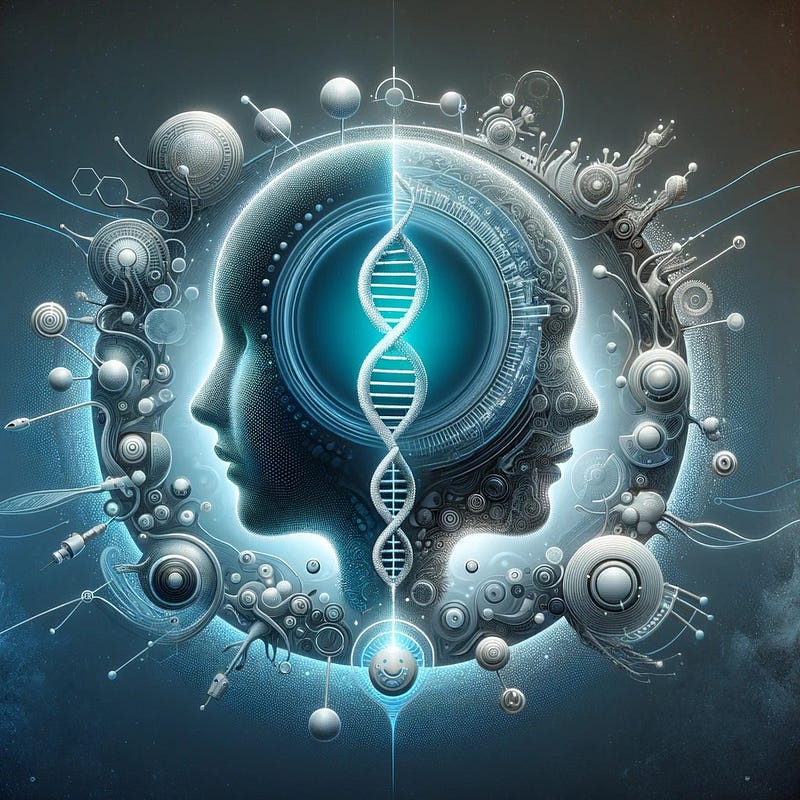Exploring Tomorrow's Child: The Future of Reproductive Technology
Written on
The Future of Reproductive Technology
Imagine a reality where childbirth is predominantly driven by technological advancements rather than natural processes. How might this shift redefine our perceptions of human connections?
In the backdrop of "The Pod Generation," a film that merges science fiction with impending reality, we find ourselves at a critical juncture in reproductive technology. As innovations once relegated to cinema inch closer to reality, it becomes essential to consider their implications for society, ethics, and our fundamental human connections. This article seeks to explore the potential impacts of these advancements, navigating the complex questions they raise.
The Progression of Reproductive Techniques
From the inception of in-vitro fertilization to the imaginative concept of artificial wombs, reproductive technologies have experienced remarkable evolution. The journey commenced with aiding conception in laboratory environments, a breakthrough that transformed the landscape of reproductive medicine. Today, we stand on the brink of further advancements with the possibility of artificial wombs, a concept that could entirely change our approach to childbirth.
These innovations symbolize not just scientific progress but also challenge our conventional understanding of conception and gestation. The transition from traditional conception to potentially gestating a human outside the body in a pod-like structure, as illustrated in "The Pod Generation," prompts profound inquiries about the future of human reproduction.
Ethical Dilemmas in Reproductive Technology
The emergence of advanced reproductive technologies introduces a complex array of ethical challenges. A central concern is how separating pregnancy from the human body might influence the essential nature of parental bonds.
Would the emotional connection between parent and child be affected by this physical separation during the gestational period? Additionally, the identity and rights of the child born from an artificial womb are crucial considerations. How would such a child understand their origins, and what legal frameworks must adapt to safeguard their rights and well-being?
Moreover, the potential commodification of pregnancy raises significant ethical questions regarding the boundaries of technology in human reproduction. These advancements could redefine the core essence of conception and birth, challenging long-standing ethical and moral beliefs.
Utopian vs. Dystopian Futures
The future of reproductive technology could unfold in drastically different ways. In an idealistic scenario, these advancements could address infertility, mitigate health risks associated with pregnancy, and provide new family planning options. They may signify a triumph of science, expanding the possibilities for human reproduction in safer and more inclusive ways.
Conversely, in a dystopian view, these technologies could introduce unforeseen social and ethical complexities. They might deepen existing inequalities, foster new forms of discrimination, and sever the emotional ties traditionally associated with childbirth. The risk of misuse or ethical violations in the name of scientific progress remains a significant concern.
This dichotomy raises vital questions about the trajectory of our technological advancements. Will we guide these innovations toward enhancing human well-being and equity, or will we find ourselves in a landscape where technology undermines our fundamental human experiences?
Insights from Experts
To gain a well-rounded perspective, we consult experts in bioethics, sociology, and technology. They offer a range of predictions regarding the future of reproductive technologies. Some foresee a future where these advancements align with societal values, addressing critical issues like infertility while upholding ethical standards. Others warn of potential pitfalls, such as diminished diversity in reproductive choices or the commercialization of human gestation.
Experts agree on the necessity of robust ethical frameworks and public discourse. As these technologies evolve, they emphasize the importance of regulations to prevent misuse and ensure equitable access. The conversation must extend beyond scientific circles to engage the public, ensuring that societal values and human rights remain paramount in the advancement of reproductive technology.
Conclusion: A Collective Future
As we approach a transformative era in reproductive technology, "Tomorrow’s Child" encourages reflection on our shared future. These innovations represent not merely scientific milestones, but pivotal points in our ongoing journey to define humanity in an increasingly technological landscape. The choices we make today will not only shape the future of reproduction but also the very essence of what it means to be human for generations to come.

As we navigate this uncharted territory in reproductive technology, your voice is vital. Share your thoughts and perspectives on how these advancements could reshape society. Let’s engage in a dialogue about the future we are stepping into. How do you perceive the balance between technological progress and preserving our fundamental human experiences?
Join the conversation in the comments and subscribe to my newsletter for updates on my latest stories.
Expert Discussions on Stem Cells and AI in Reproductive Tech
In the video titled "Matt Krisiloff & Roon on Turning Stem Cells into Human Eggs, Longevity, OpenAI, AI's Role in Biotech," experts discuss the intersection of biotechnology and artificial intelligence, providing insights into how emerging technologies can revolutionize reproductive methods and health.
Social Repercussions of Advanced Technologies
The societal implications of advanced reproductive technologies could be extensive. A major concern is the potential exacerbation of socioeconomic disparities. If these technologies become accessible only to the affluent, it could create a new layer of inequality within society. Additionally, these innovations might redefine familial structures and societal norms surrounding parenting and childbirth.
Traditional roles and responsibilities may undergo significant shifts, prompting a reexamination of what it means to be a parent in this new era. Furthermore, the widespread adoption of artificial wombs could influence population dynamics and demographic trends. Will this lead to increased birth rates or shift societal attitudes towards family planning?
The social ramifications of these technologies are unpredictable, necessitating a thoughtful approach to their integration into society.